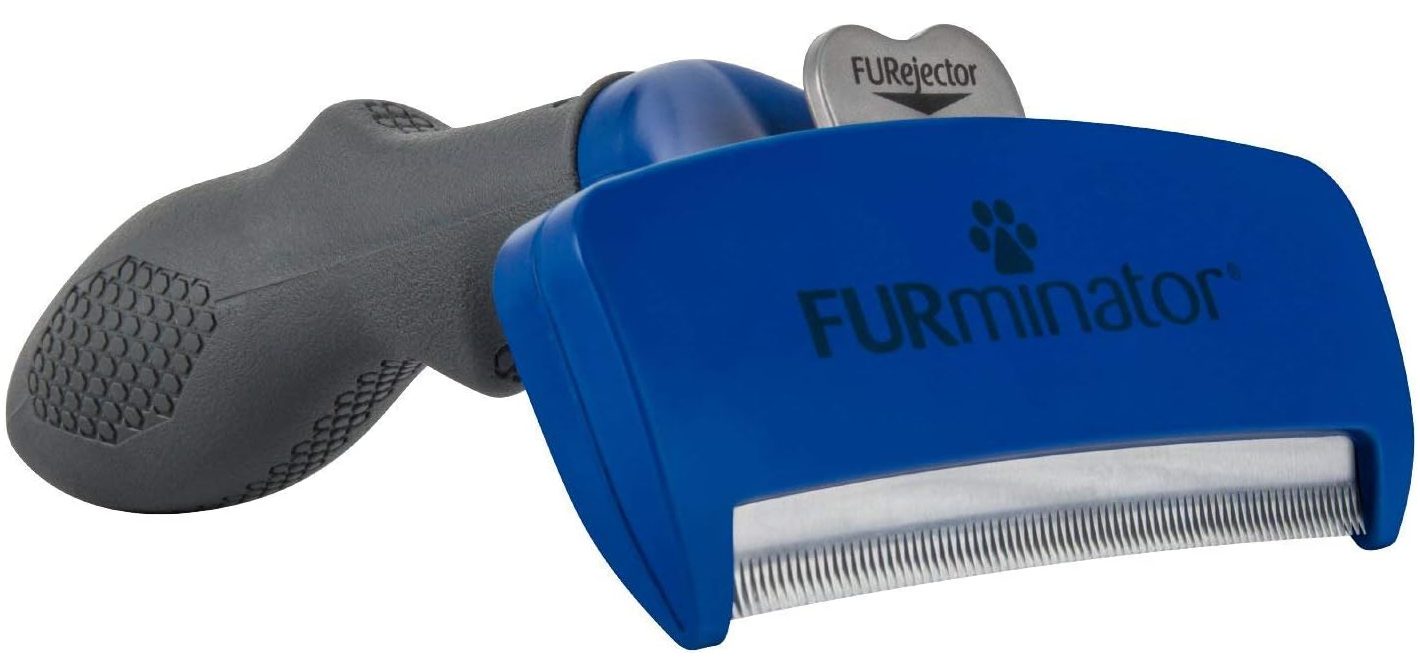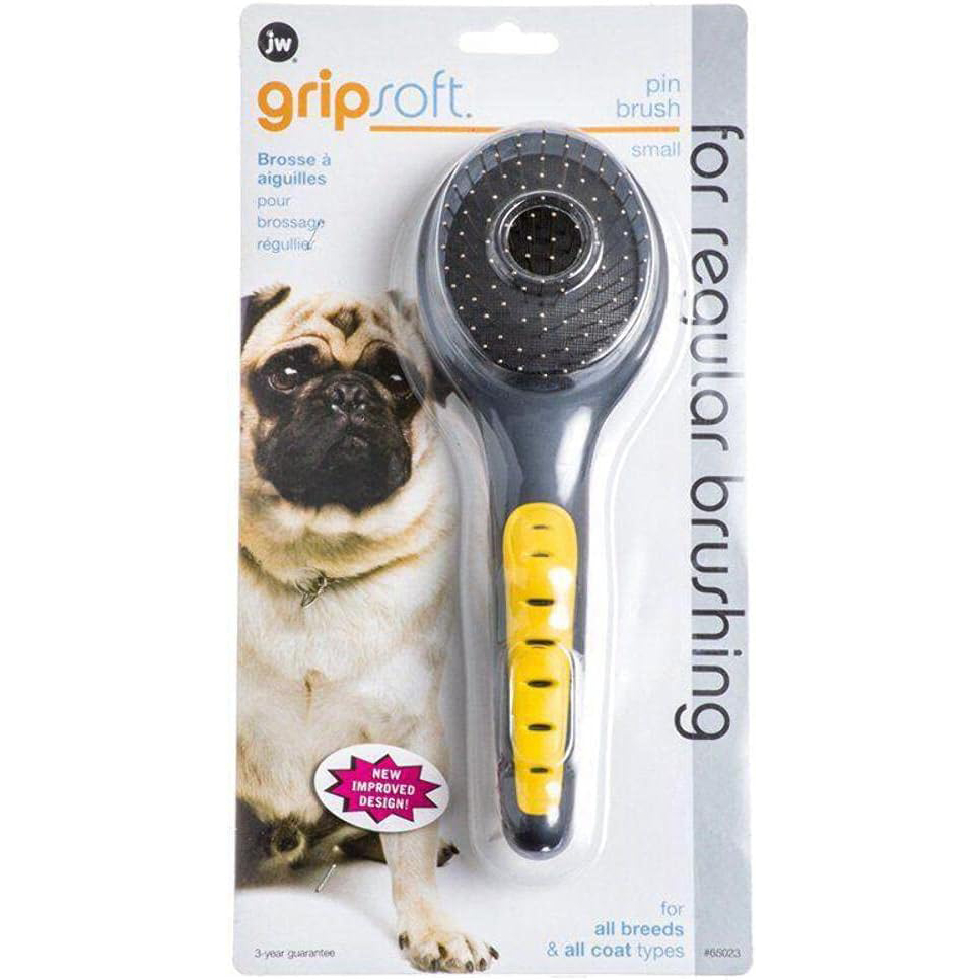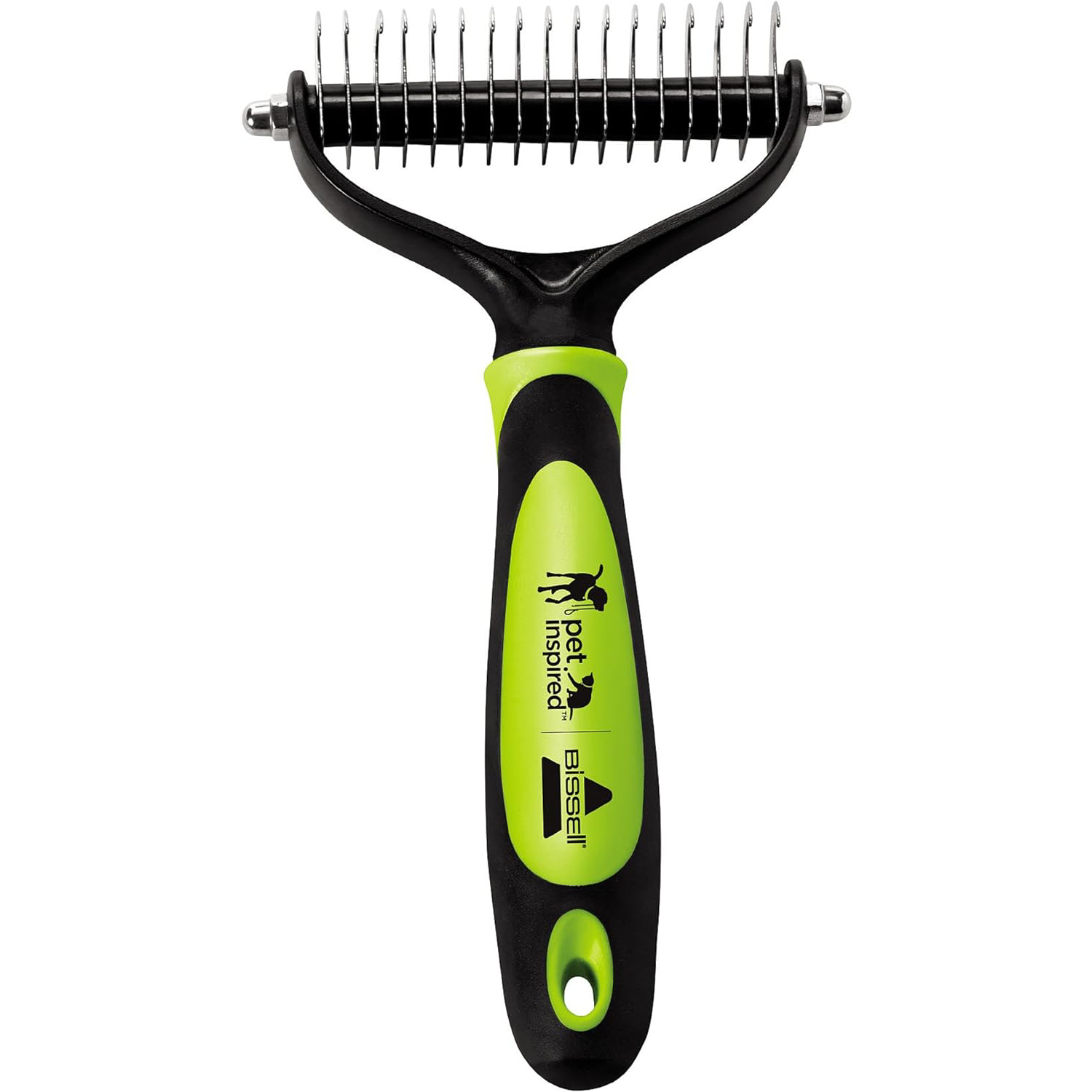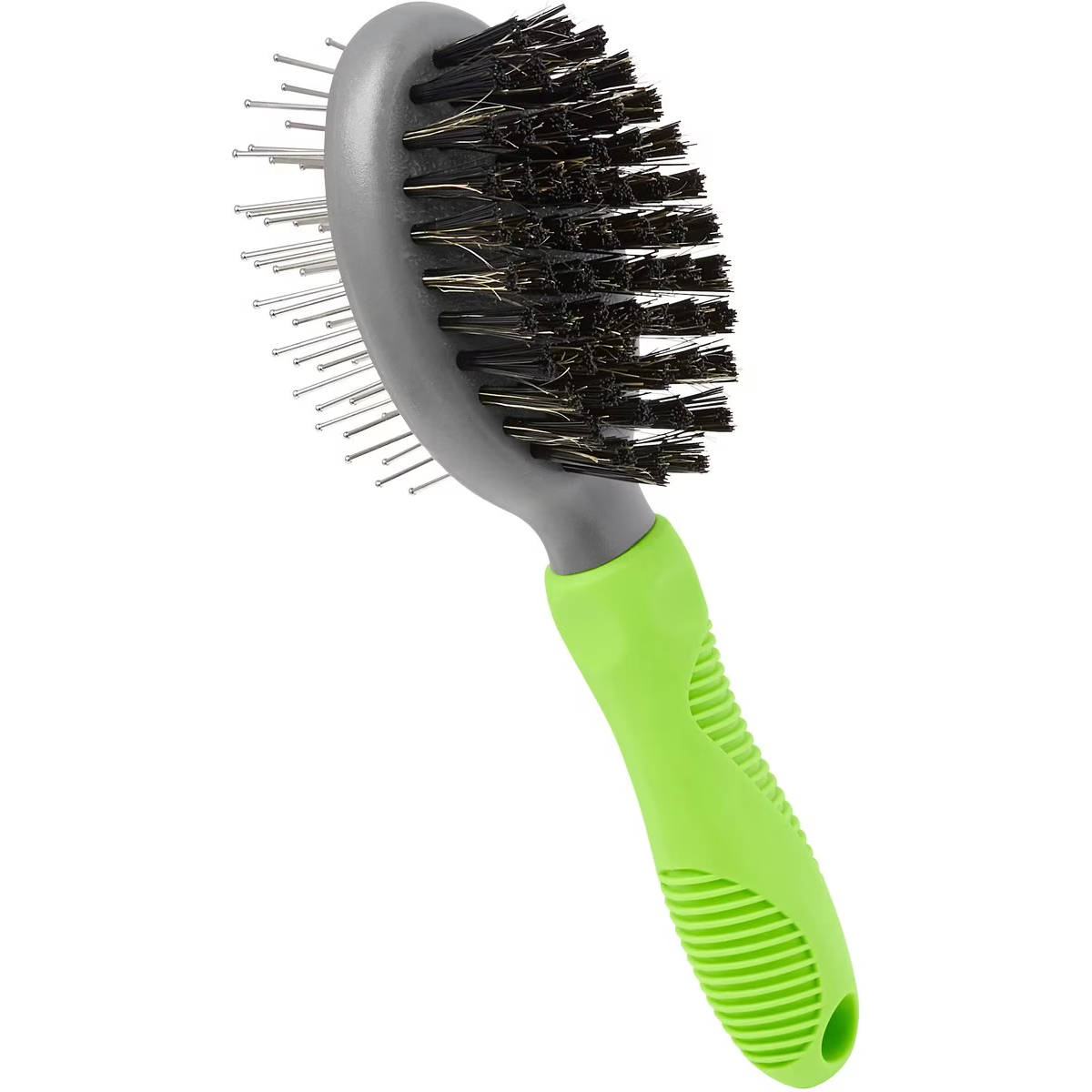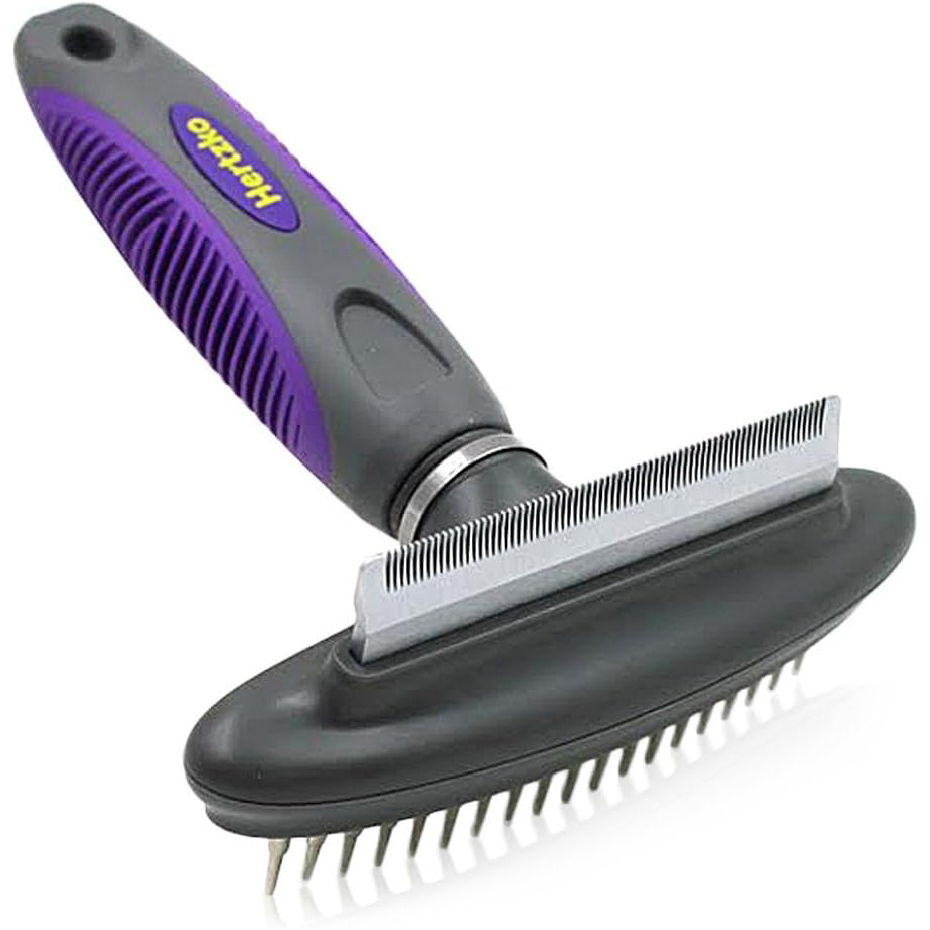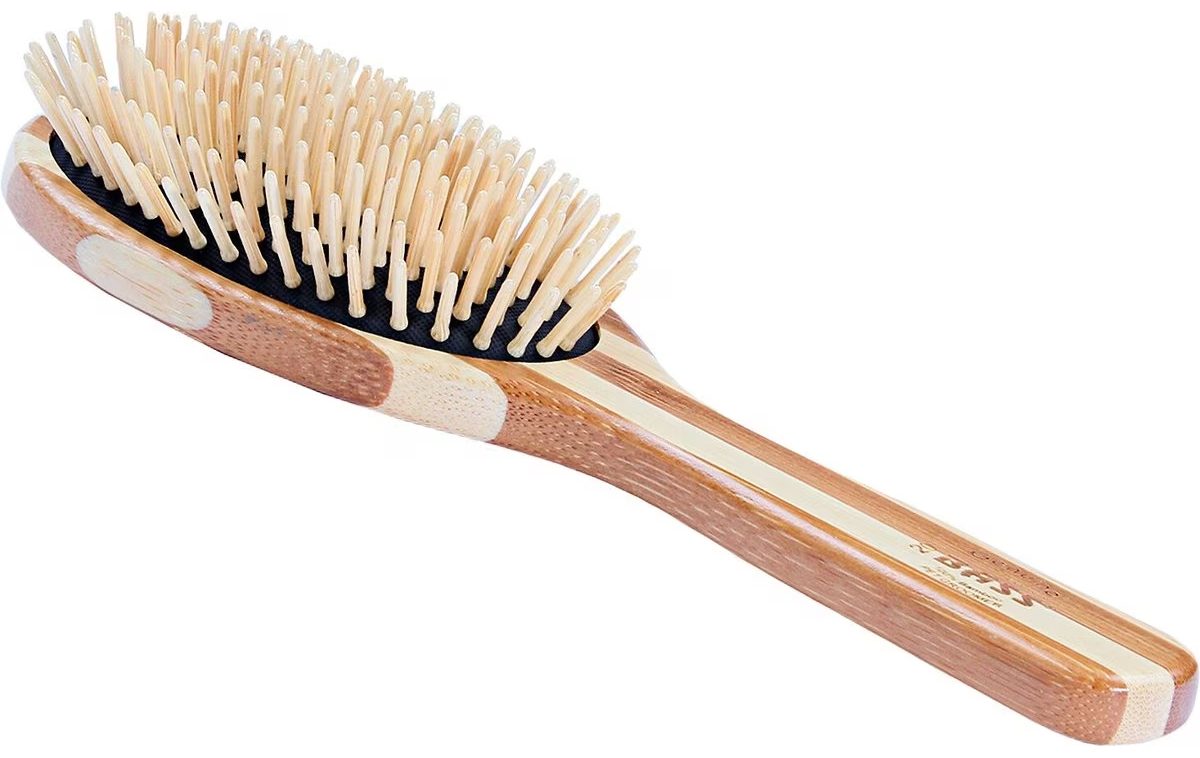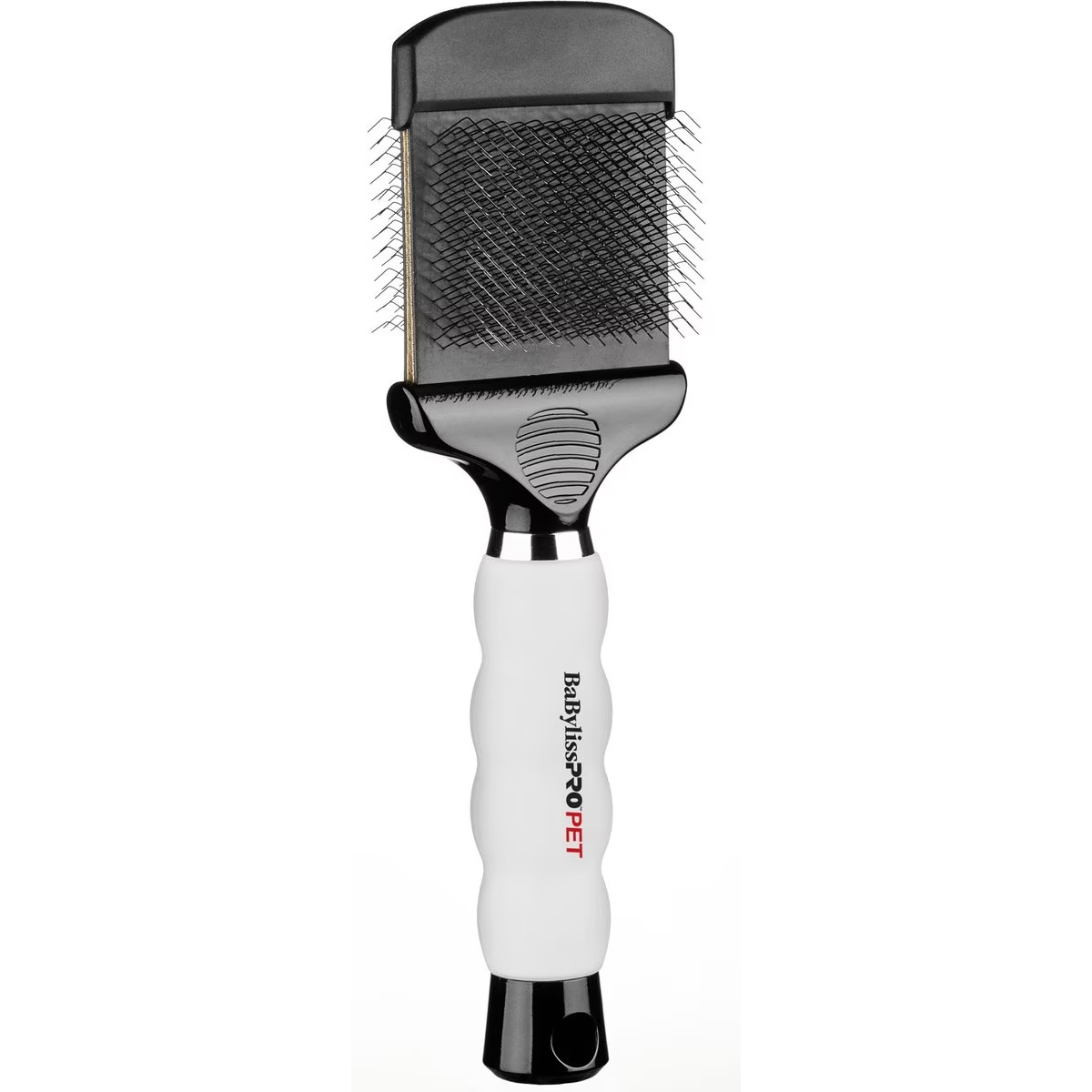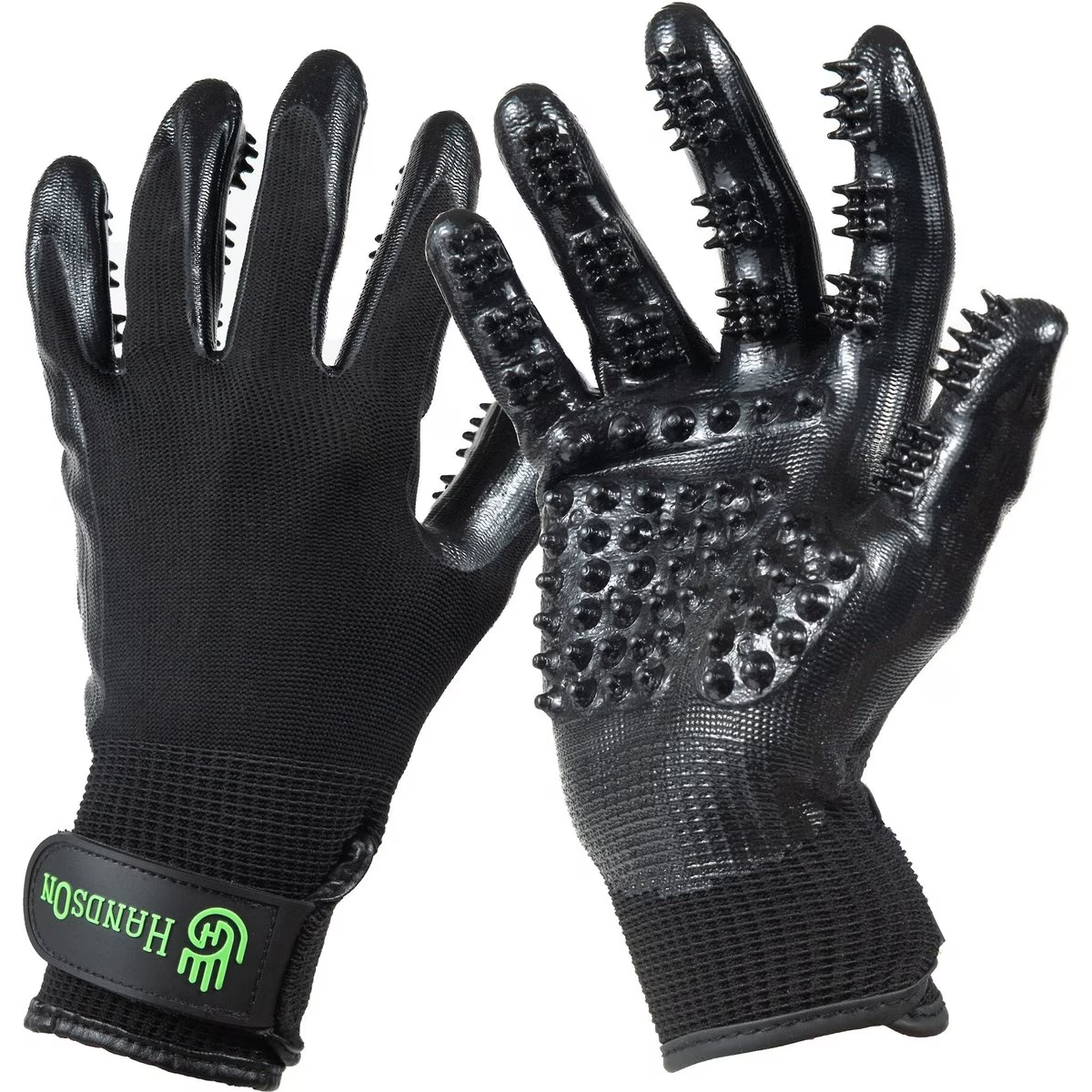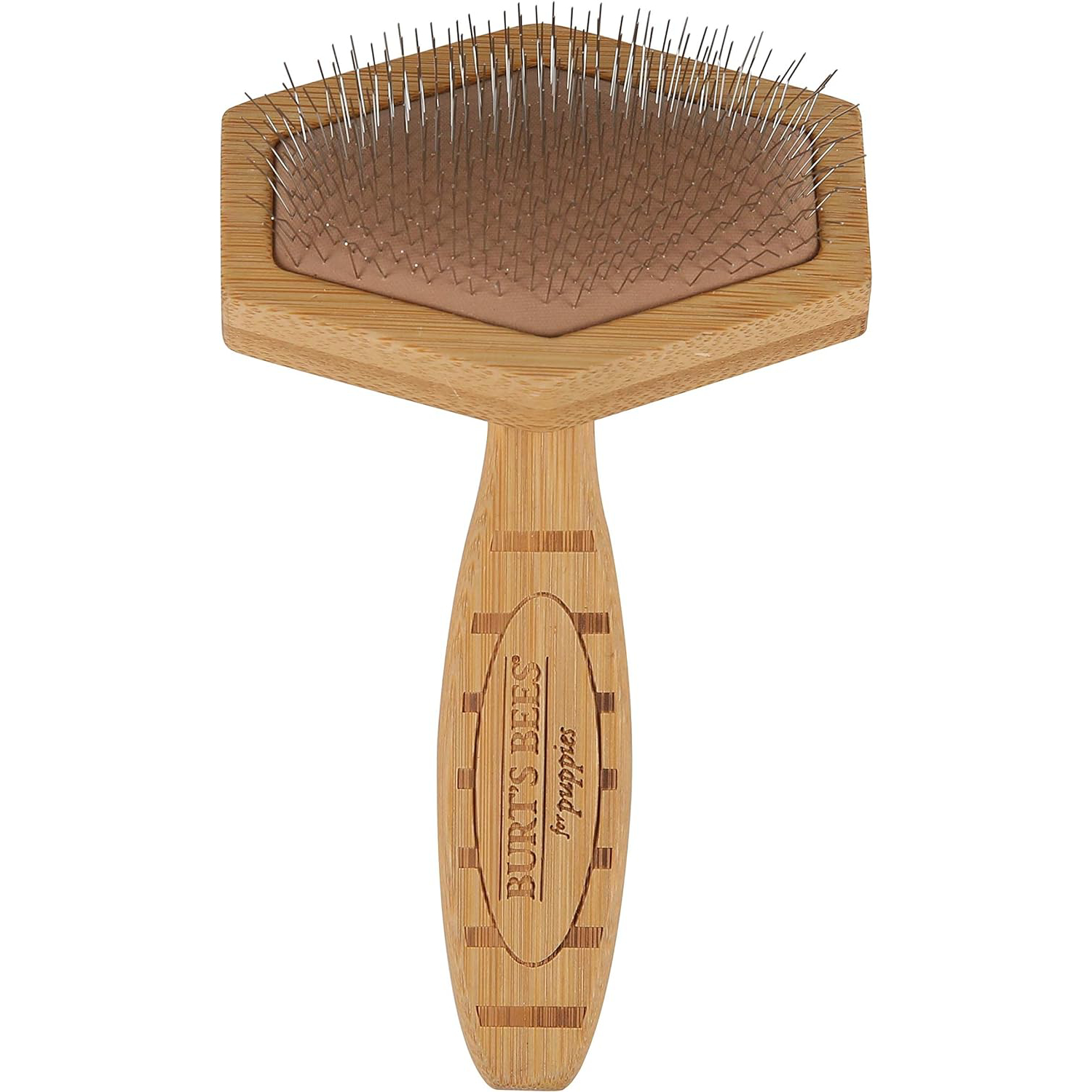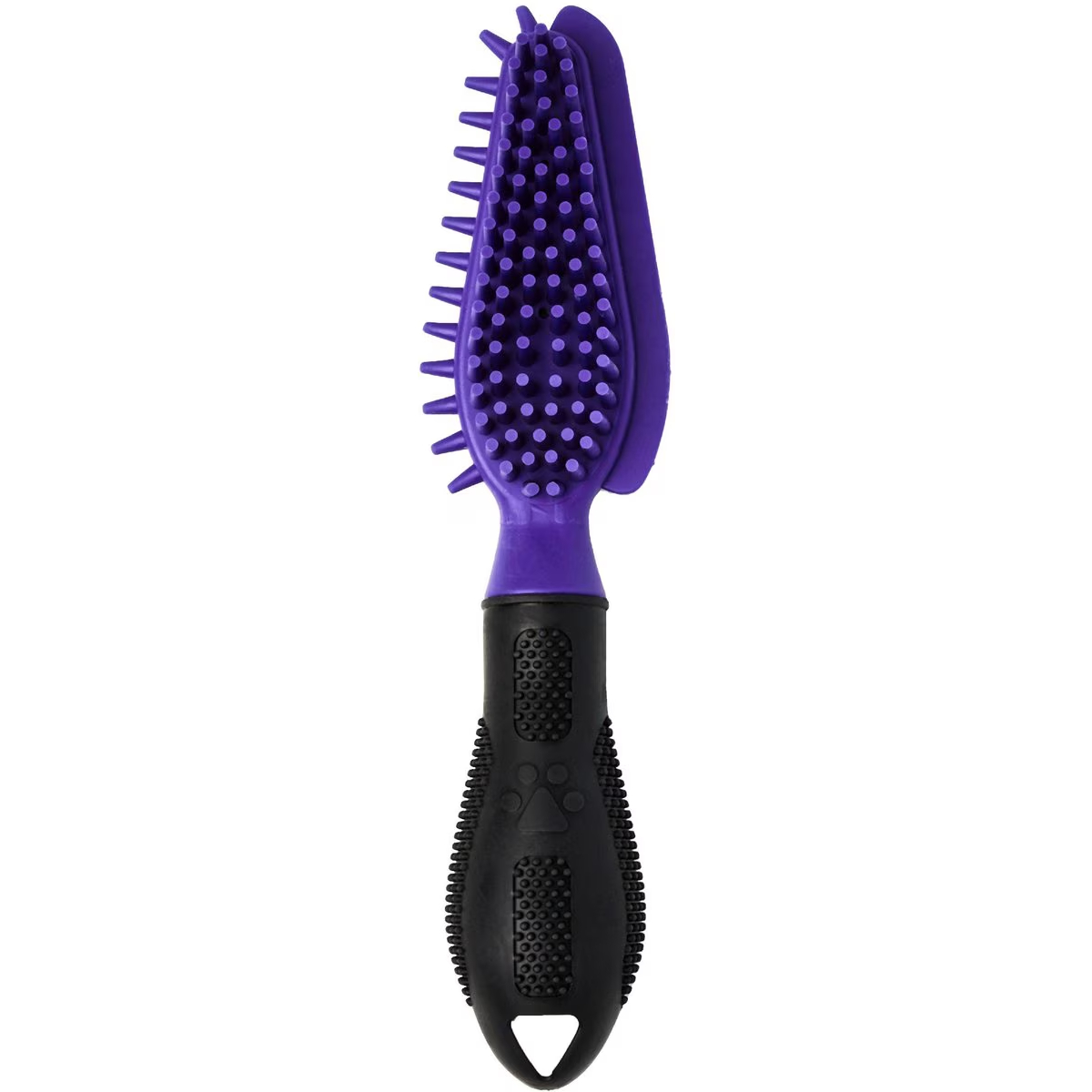The length of a dog’s hair is often a factor when choosing a dog to have as a pet. Although short-haired canines require less attention to grooming than long-haired dogs, they still need weekly brushing to keep their coats healthy and shiny. Shedding deposits clumps of hair around your home, but brushing catches loose hair and lets you deposit it in the trashcan. You can find thousands of dog brushes online, but which product is ideal for your short-haired friend?
We developed a list of the 10 best brushes for short-haired dogs and included detailed reviews to help you find the right tool for your pet.
 A Quick Glance at Our Favorites
A Quick Glance at Our Favorites
The 10 Best Brushes for Short Hair Dogs
1. FURminator Hair Undercoat deShedding – Best Overall
| Breed Type: | De-shedding tool |
| Color: | Orange/black |
We researched several exceptional products, but the FURminator Short Hair Undercoat deShedding Dog Tool won the best overall dog brush for short-haired pups. Unlike many competitors, FURminator designed its product with short-haired dogs in mind. The tool has curved teeth to follow your pet’s natural curves while brushing. The grooming blades reach the undercoat to remove loose hair without irritating the skin. The curved plastic edges on each side of the blades glide over the skin and protect the de-shedding teeth when the tool is stored.
FURminator’s ergonomic handle makes it one of the most comfortable tools for your dog. The comfortable grip does not slip if your hands are wet or sweaty, and the brush is light enough to not feel too overbearing on your pet. The manufacturer claims the tool will reduce shedding on your dog by 90%. According to FURminator’s customers, the claim appears to be true. We could find very little to criticize about the brush, but some dogs like to chew it if it’s not stored after grooming.
- Reduces shedding by 90%
- Comfortable handle
- Curved guide protects your dog’s coat
- Sturdy design
- Some dogs like to chew on the handle
2. JW Pet Gripsoft Small Pin Brush – Best Value
| Breed Type: | Pin brush |
| Color: | Black/yellow |
If you’re trying to save a few dollars on your grooming products, you can try the JW Pet Gripsoft Small Pin Brush. You’re unlikely to find another quality brush for such a low price. We gave the Gripsoft our award for the best dog brush for the money. It has a non-slip grip that makes grooming your pet comfortable and controlled. The short pins are tipped with round ends to prevent irritation when they glide over the skin. The brush effectively removes loose hair to reduce shedding.
Although the Gripsoft smooths out the animal’s coat and collects loose fur, it sometimes struggles to remove tangles or loosen matted hair. However, if you use the brush at least once a week, your dog’s coat is less likely to have issues with matting.
- Affordable
- Non-slip handle
- Lightweight
- Does not remove stubborn tangles
3. Bissell FURGET IT All-in-One Grooming – Premium Choice
| Breed Type: | De-shedding, de-matting |
| Color: | Black/green |
When your dog’s fur becomes tangled and matted, you need a brush to handle multiple tasks. The Bissell FURGET IT All-in-One Grooming brush is a two-sided brush with one set of blades for tangles and mats and another for de-shedding the undercoat. It’s our premium selection, but it’s inexpensive for a brush that performs the same tasks as two grooming tools. The stainless-steel teeth are positioned behind curved metal guides that reach the outercoat without disturbing the animal’s skin. The soft, non-slip handle is comfortable for long grooming sessions, and the broad head covers a large area.
The Bissell brush is a valuable tool for short-haired canines. Still, some customers complained that the blades pulled at the fur when removing stubborn matted spots.
- Multi-use grooming tool
- Removes loose hair and tangles
- Non-slip handle
- Tugs at fur when coats are dense
4. Frisco Cat & Dog Combo Brush – Best for Puppies
| Breed Type: | Pin/bristle brush |
| Color: | Green/gray |
Puppies have lighter coats and more sensitive skin than adults, and we wanted to find a gentle but effective brush. The Frisco Cat & Dog Combo Brush meets the challenge with a double-sided tool with pins on one side to remove loose fur and soft bristles on the other to smooth out the coat, distributing natural oils. The pin bristles are tipped with rounded pieces to prevent damage to the skin, and they remove dirt, debris, and loose hair to minimize shedding.
This Frisco brush is a gentle alternative to aggressive de-matters and rigid-blade models. However, the soft bristle side of the tool is too flexible and does little to smooth out thick coats.
- Affordable
- Two-sided bristles
- Ideal for puppies
- Bristle side is too soft to smooth out dense fur
5. Hertzko 2-in-1 Dog & Cat Grooming Tool
| Breed Type: | De-shedding tool/comb |
| Color: | Dark gray/purple |
The Hertzko 2-in-1 Dog & Cat Grooming Tool has a fine-toothed de-shedding tool on one side and a comb on the other to smooth the coat. It has a non-slip grip and a wide cutting head that reduces your grooming time by covering more area. One of the unique aspects of the Hertzko tool is the flexible head. The head is attached to the handle with a ball joint that allows the brush to bend with the contours of your pet’s body.
Although the brush receives high marks from both dog owners and cat lovers, the comb side of the tool is a bit too rough for animals with light coats.
- Flexible head
- De-shedding tool and comb
- Broadhead for excellent coverage
- Comb side is too aggressive for light coats
6. Bass Brushes Green Dog & Cat Oval Brush
| Breed Type: | |
| Color: |
If you’ve cared for canines for several years, you’ve probably gone through several grooming tools and brushes. Because dogs are the most common pets in the United States, their products create significant waste. With the Bass Brushes Green Dog and Cat Oval Brush, you can groom your dog and show your love for the environment. The Oval brush is made from eco-friendly bamboo, and unlike the competition’s brushes, Bass uses bamboo pins to remove loose hair and dirt. The handle has an attractive stained finish, and the oval head is ideal for grooming smaller breeds.
Several dog owners were pleased that the Bass brush used bamboo instead of metal pins, but some dogs liked to chew on the bristles. Keeping your brush in a drawer or cabinet can prevent your pet from damaging the tool.
- Made from environmentally friendly bamboo
- Bamboo pins are softer than metal pins
- Durable and attractive
- Some dogs chew on the bristles
7. Babyliss Pro Pet Flex Slicker Pet Brush
| Breed Type: | Slicker brush |
| Color: | Black/white |
The Babyliss Pro Pet Flex Slicker Pet Brush has long, flexible pins that penetrate thick, short hair to remove dirt and loose fur. The pins are angled to follow the curves of your pet’s body, and the gel-filled handle is comfortable and non-slip. The bristles of the Babyliss are more rigid than similar models, and they’re more capable of removing tangles and matted fur.
However, the brush’s pins are too hard on dogs with light coats, and the brush is not suitable for pets that like to chew. Some customers complained that the gel leaked from the handle when their dogs bit into it.
- Affordable
- Rigid bristles remove tangles
- Available in two sizes
- Gel handle leaks if damaged
- Too hard on light coats
8. HandsOn All-In-One Pet Bathing & Grooming Gloves
| Breed Type: | Grooming gloves |
| Color: | Black |
If your pup runs away when it sees the grooming brush in your hand, you may have to try another tool for removing loose fur. The HandsOn All-in-One Pet Bathing and Grooming Gloves are perfect for pets who dislike the feel of tiny pins on their skin. The gloves can be used in the bath to distribute shampoo and massage the dog’s coat, and they can be your go-to grooming tool for removing dirt and loose hair.
Dog and cat parents with sensitive pets love the grooming gloves, but they create more of a mess than bushes. The gloves remove fur and tangles, but the hair does not stick to them; it falls on the floor or stays on your dog.
- Gentle alternative to brushing
- Removes tangles and loose hair
- Expensive
- Hair does not stick to gloves
9. Burt’s Bees Slicker Puppy Brush
| Breed Type: | Slicker brush |
| Color: | Stained wood |
Burt’s Bees Slicker Puppy Brush is made from eco-friendly bamboo and recycled materials. It has a broad head with sturdy, slicker bristles to untangle fur and remove loose hair. It resembles an old-fashioned hairbrush for humans with a wooden handle. It is comfortable to use, although it is not non-slip.
The slicker brush was designed for puppies, but we thought it was more effective on adult dogs with dense, short coats. The bristles are too abrasive for thin coats, and they could irritate the sensitive skin of a young pup. If you have a puppy or an adult dog with a light outer coat, we suggest using a slicker brush with softer bristles.
- Affordable
- Made from recycled materials and eco-friendly bamboo
- Too abrasive for light coats
- Too abrasive for puppies
10. FURminator Hair Collection Dog & Cat Brush
| Breed Type: | Four-in-one collection brush |
| Color: | Gray/black |
The FURminator Hair Collection Dog and Cat Brush is a unique tool that uses plastic knobs to loosen and collect hair. It has plastic pins on all four sides to groom difficult areas like the chin or around the neck. Unlike the other brushes reviewed, the FURminator can also clean your upholstery and dog furniture. It’s safe to use on wet or dry hair, and the plastic bristles create an electric charge when grooming that causes the loose hair to stick to the brush. Dogs who dislike the feel of metal bristles will enjoy grooming with the FURminator.
Although pets seem to like the feel of the brush, it’s not very effective at removing loose fur or reducing shedding. However, pet owners were astounded by how easily the brush cleans their furniture and dog equipment.
- Affordable
- Removes fur from pets and upholstery
- Does not remove enough hair
- Dogs can chew on the bristles
Buyer’s Guide: Selecting the Best Brush for Short Hair Dogs
You have several options for grooming tools, but whichever brush you choose, you can use this guide for tips on how to groom your pet safely and effectively.
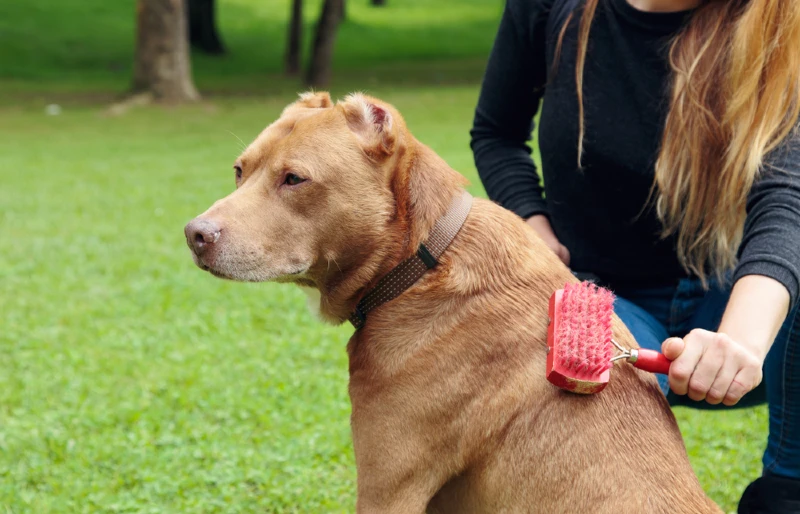
Grooming Tips
Although some pets enjoy the experience, grooming is not pleasant for every animal. You can encourage your dog to be more receptive to the process by providing tasty treats after each brushing. Positive reinforcement is a practical training technique, and it works wonders with grooming timid pets.
- Brush in the direction of the hair’s growth.
- Only use brushes on wet hair designed for wet and dry use.
- Apply light pressure when using a slicker brush. Pushing down with too much force can pull at fur and scratch the skin.
- Refrain from shouting at your pup when grooming becomes difficult. Stay calm and praise your dog for being a good girl or boy.
- Wait until after the animal has eaten before grooming. Hungry pups are more likely to gnaw on the brush while you’re grooming.
- Grab a partner to help you with grooming if your pet tends to wiggle around during brushing.
- If the brush becomes damaged or has rusted bristles, throw it in the garbage.
- Keep your brush in a secure location to keep your pet from chewing on it.
- Contact a professional groomer if tangled or matted hair cannot be smoothed out with your tools.
- If you see a large amount of dandruff when you’re grooming, make an appointment with your veterinarian to inspect your pet for skin conditions.
If your pup is still fearful when you bring out the brush, you may have to use a different brush or tool that’s gentler on short hair. Slicker brushes and de-shedding tools seem to remove more loose fur than other brush types, but they can sometimes be too abrasive on dogs with thinner coats. When your dog dislikes the feel of sharp bristles, you can use one of these alternatives.
Grooming Gloves
Grooming gloves are a great option for dogs with lighter coats. The nitrile knobs on the gloves remove loose hair and massage the animal’s skin. Most dogs and cats love being groomed with gloves because they’re less abrasive than brushes, but they can create a significant mess compared to slickers and de-shedding tools. The gloves do not hold onto the loose fur very well, and most of it will end up on your lap or floor.
Plastic Hair Collectors
Although our 10th pick, the FURminator Hair Collection Brush, does not reach down to the undercoat as well as de-shedding teeth or slicker bristles, its plastic knobs are easier on sensitive skin. It’s not effective on dogs with thick coats or long hair, but it’s perfect for short-haired dogs or puppies. Using the hair collector at least twice a week can reduce tangles and knots, but you may have to use a de-matter first if your dog has not been groomed for several weeks or months.
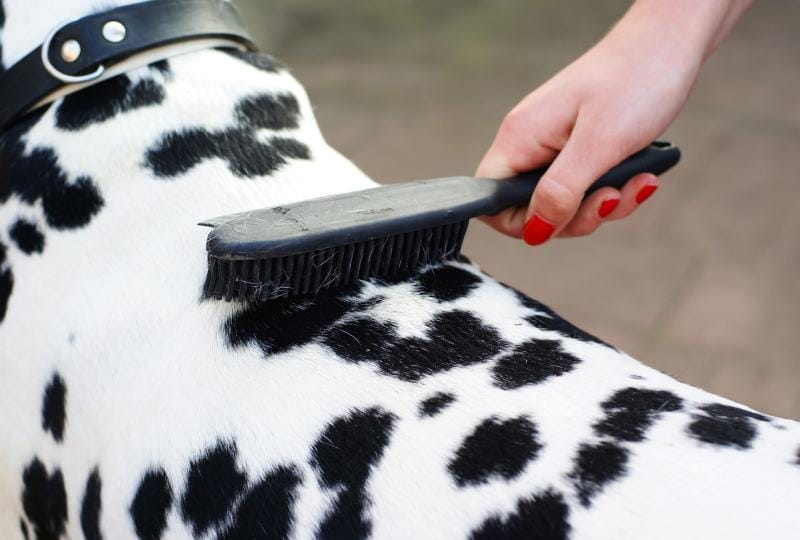
How Often Should You Groom Your Short-Haired Pet?
Although long-haired dogs may require more frequent grooming, short-haired animals should at least be brushed once every week at the minimum. Ideally, your dog should be groomed twice a week to reduce shedding and prevent tufts of fur from accumulating around your home.
However, the frequency of brushing also depends on the breed. Some short-haired canines shed more than long-haired pups, and dogs with curly coats tend to have more problems with tangles than dogs with short, straight hair.
Can Grooming Too Often Damage the Animal’s Skin?
You can damage your pet’s skin if you apply too much force when brushing, but you are unlikely to harm your pet if you add an extra day or two of grooming. De-matting tools are not for daily use and should only be used to remove tough knots or tangles. Slickers and pin brushes are safe for frequent use if you use light pressure, but grooming gloves are gentle enough to be used daily. However, most short-haired breeds will not need to be brushed more than twice a week.
 Conclusion
Conclusion
Grooming is an essential duty that keeps your pet’s hair and skin healthy, and you should not have any problems finding a brush for your pet. Our reviews highlighted several high-quality brushes, but the FURminator Short Hair Undercoat deShedding Tool was our top pick. It removes more loose fur than the competitors and has one of the most comfortable handles on the market.
Our selection for the best brush for the money was the JW Pet Gripsoft Small Pin Brush. Its round-tipped flexible bristles collect hair effectively, and it’s available for an affordable price.
- You may also want to read: 10 Best Brushes for Labs – Reviews & Top Picks
Featured Image Credit: hedgehog94, Shutterstock
Contents
- A Quick Glance at Our Favorites
- The 10 Best Brushes for Short Hair Dogs
- 1. FURminator Hair Undercoat deShedding – Best Overall
- 2. JW Pet Gripsoft Small Pin Brush – Best Value
- 3. Bissell FURGET IT All-in-One Grooming – Premium Choice
- 4. Frisco Cat & Dog Combo Brush – Best for Puppies
- 5. Hertzko 2-in-1 Dog & Cat Grooming Tool
- 6. Bass Brushes Green Dog & Cat Oval Brush
- 7. Babyliss Pro Pet Flex Slicker Pet Brush
- 8. HandsOn All-In-One Pet Bathing & Grooming Gloves
- 9. Burt’s Bees Slicker Puppy Brush
- 10. FURminator Hair Collection Dog & Cat Brush
- Buyer’s Guide: Selecting the Best Brush for Short Hair Dogs
- Grooming Tips
- Grooming Gloves
- Plastic Hair Collectors
- How Often Should You Groom Your Short-Haired Pet?
- Can Grooming Too Often Damage the Animal’s Skin?
- Conclusion

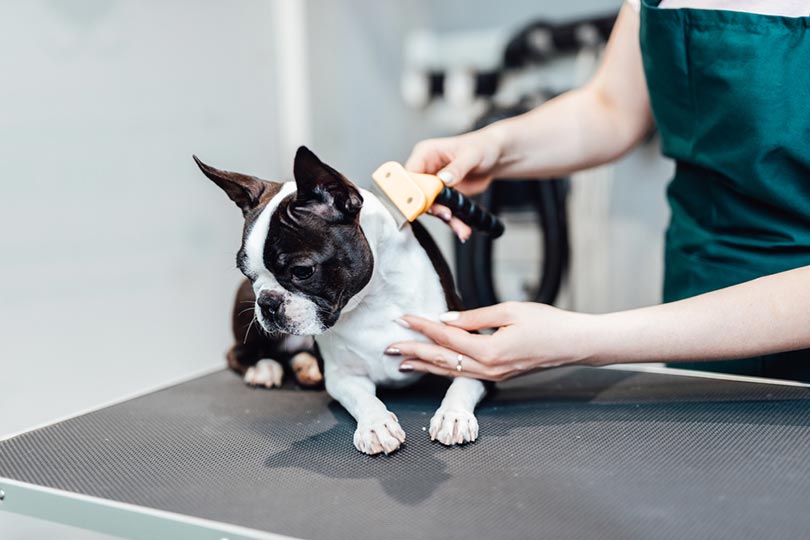
 A Quick Glance at Our Favorites
A Quick Glance at Our Favorites